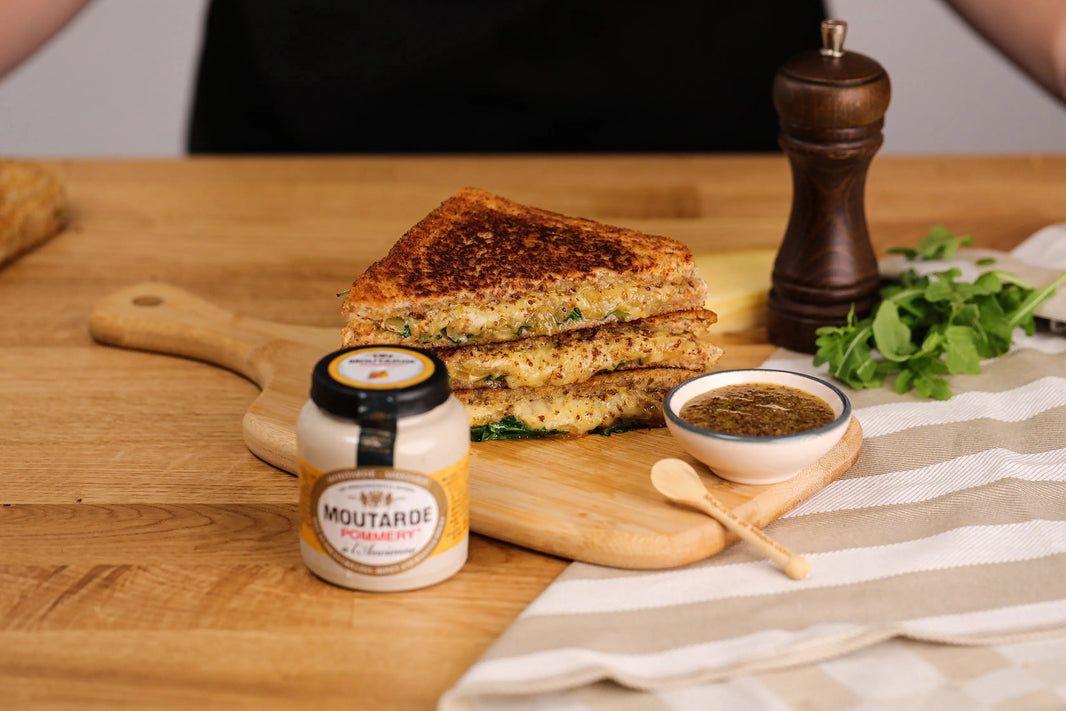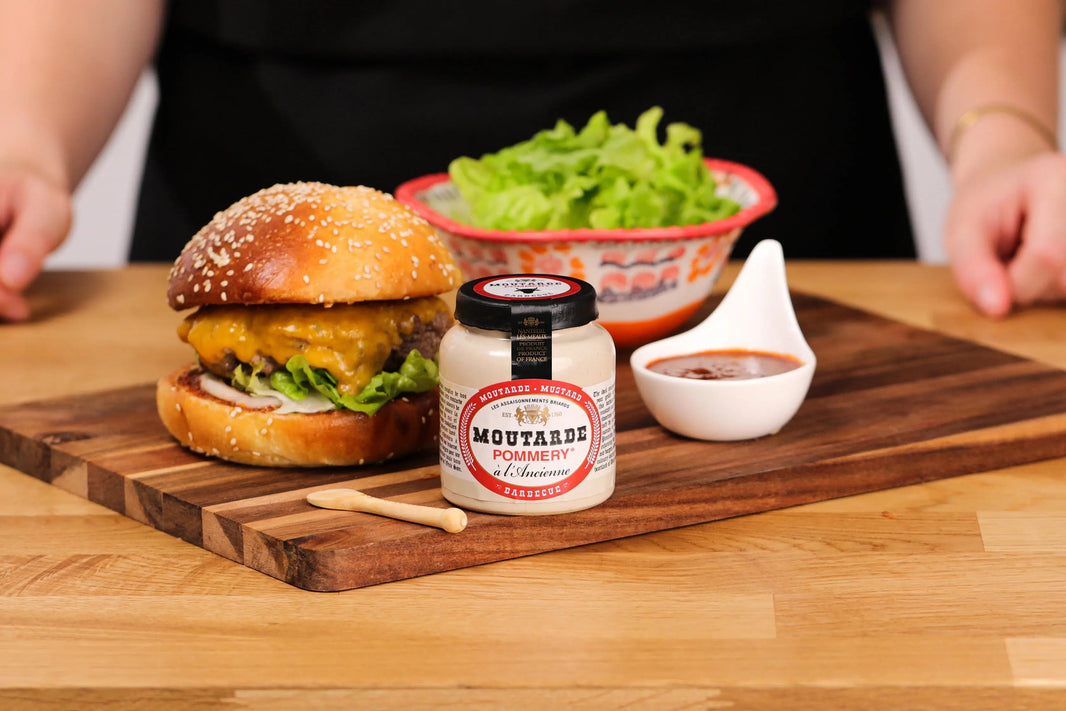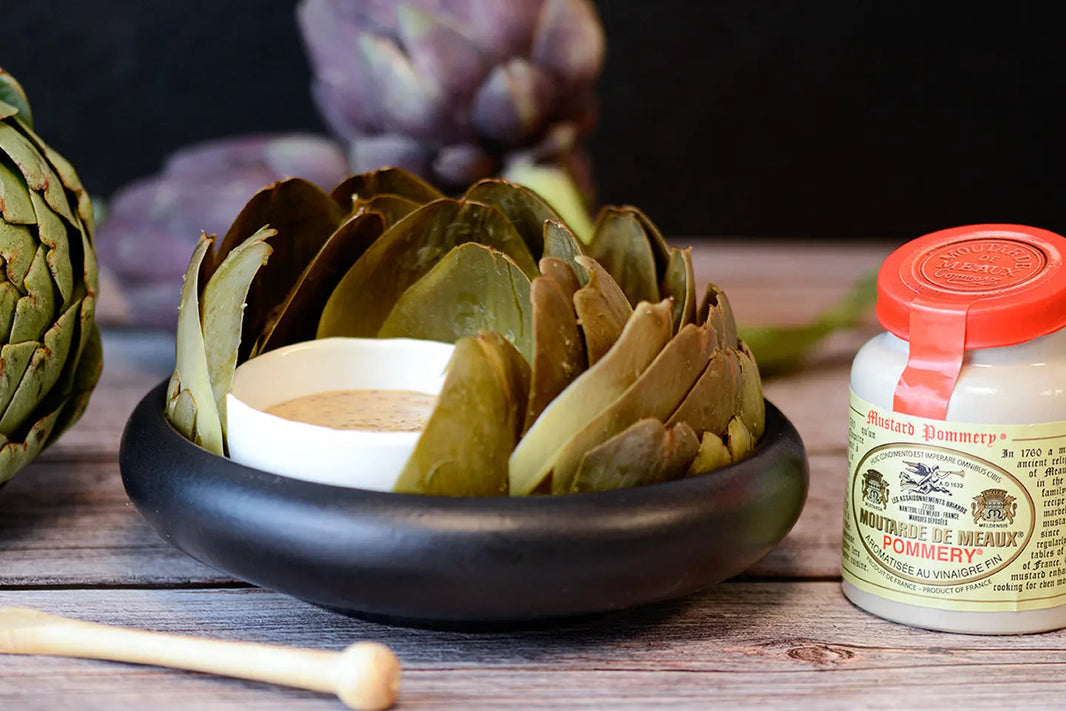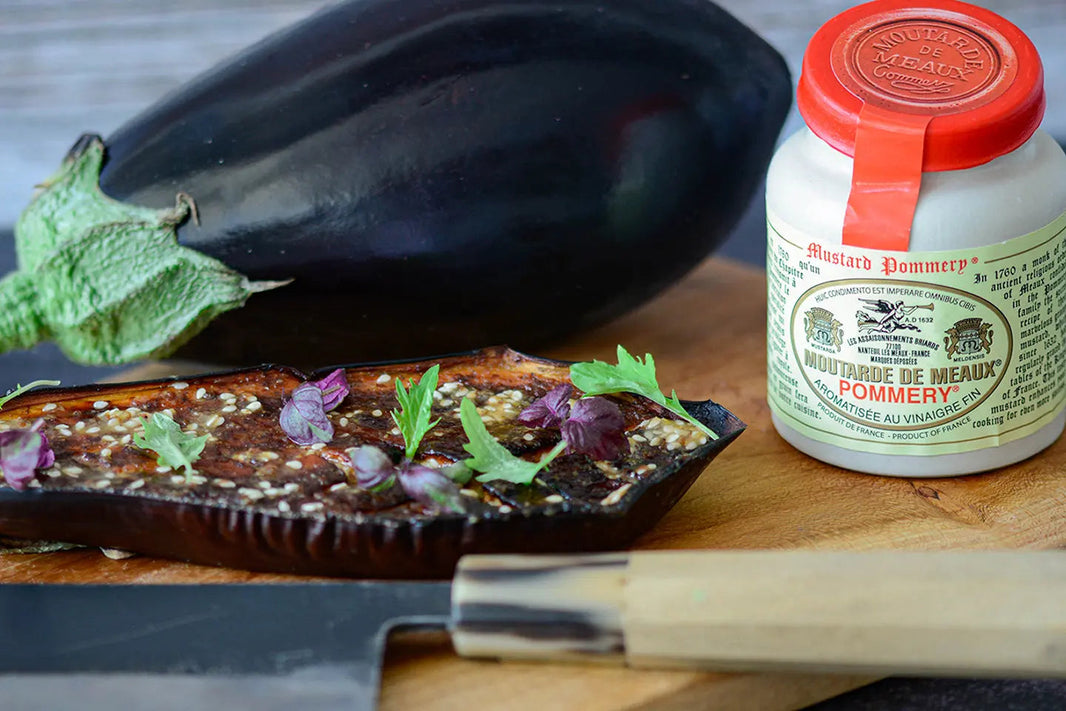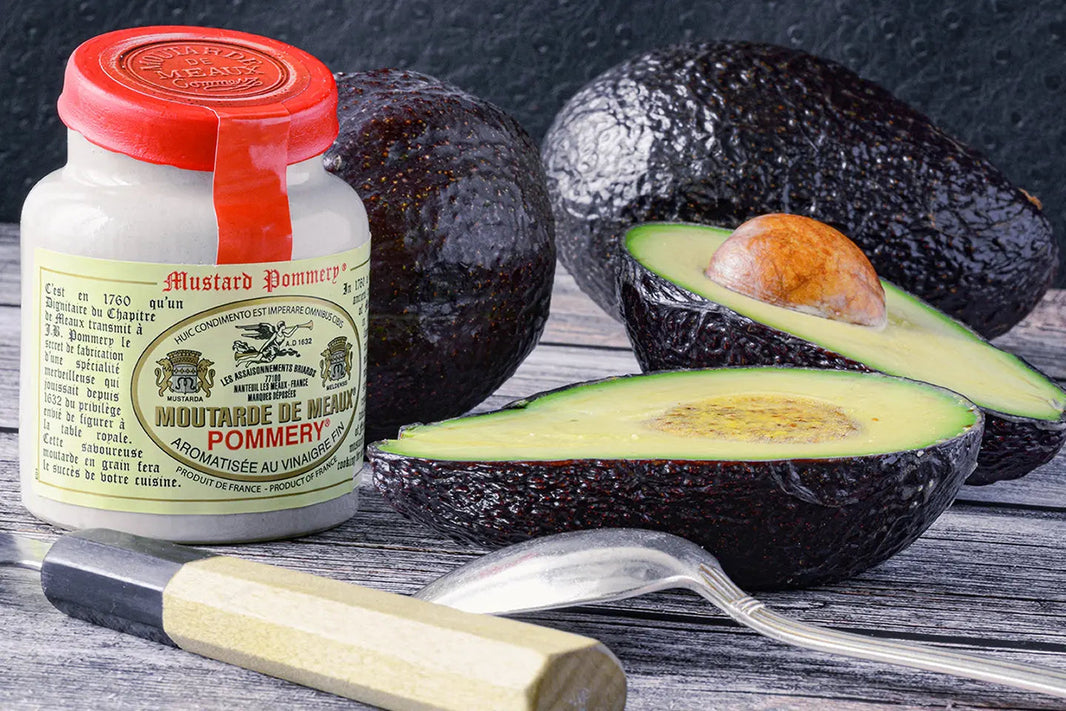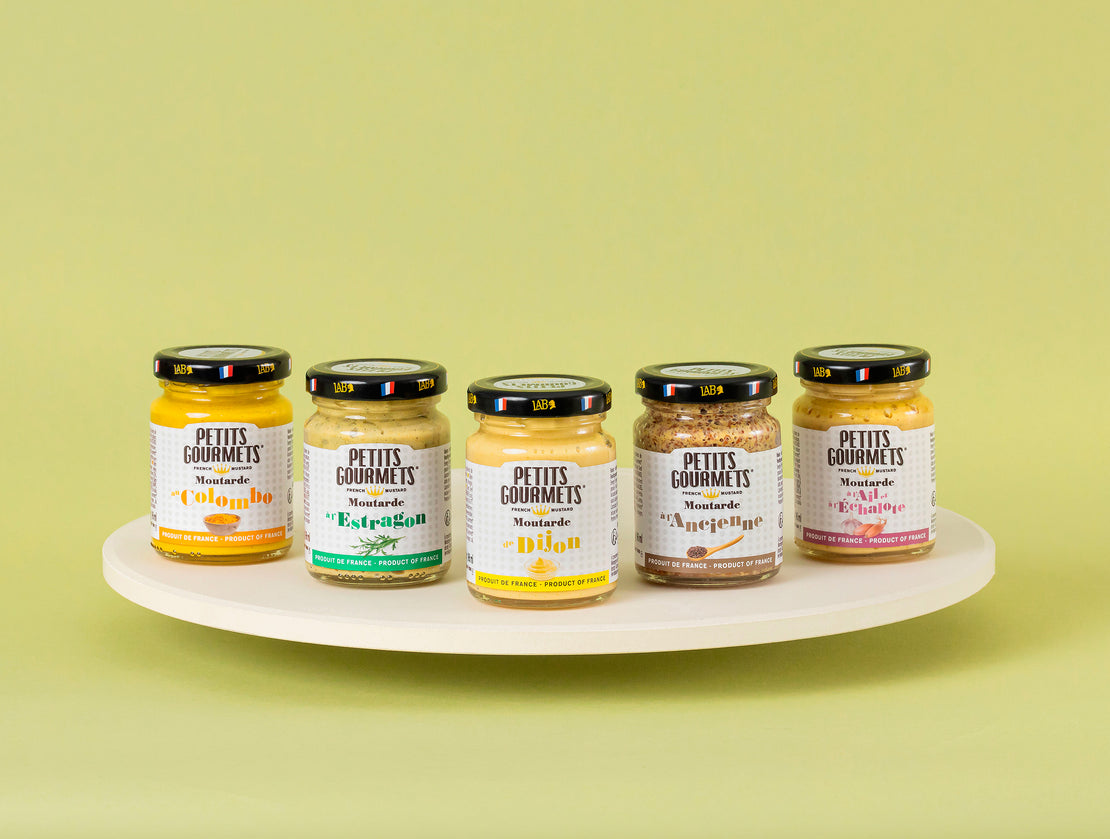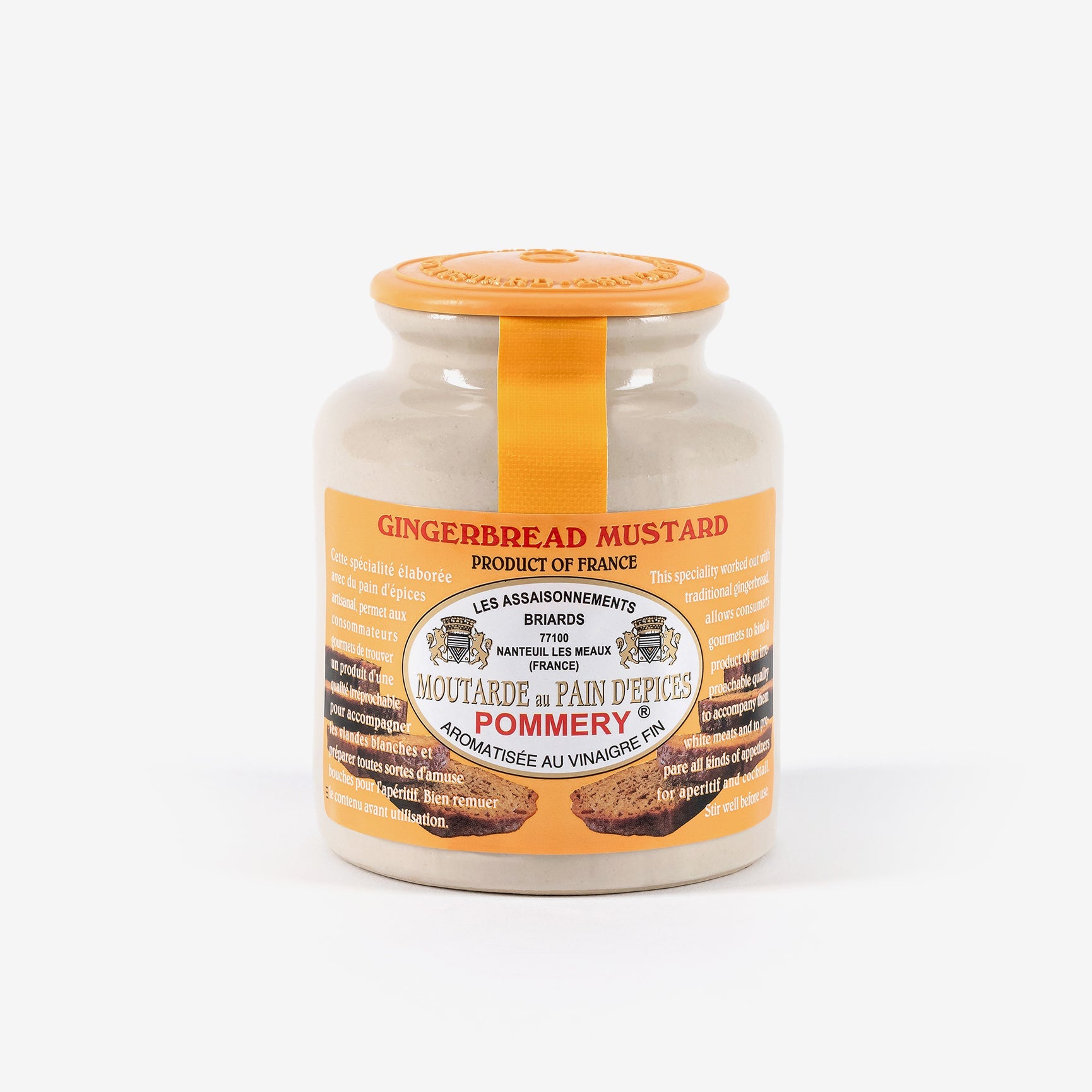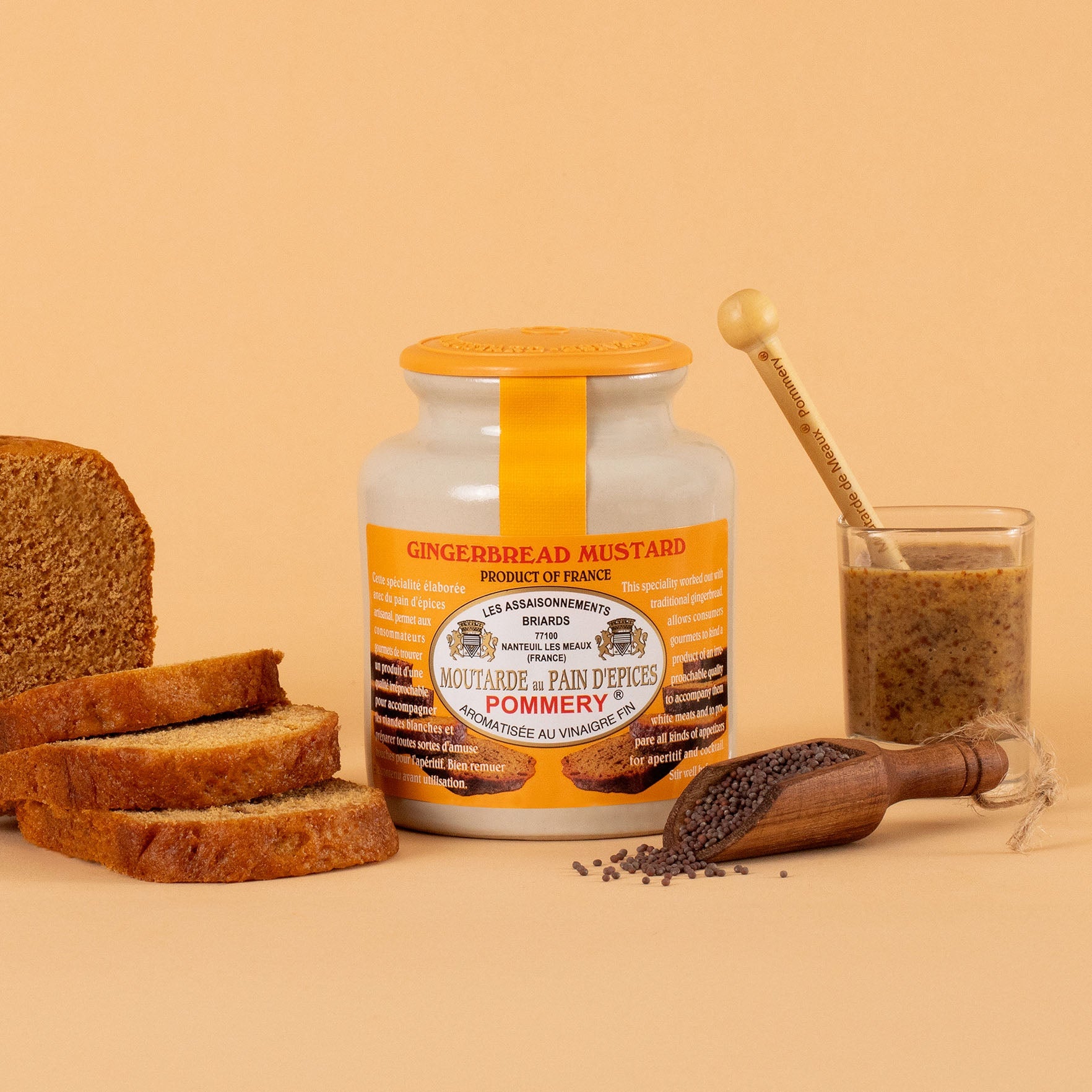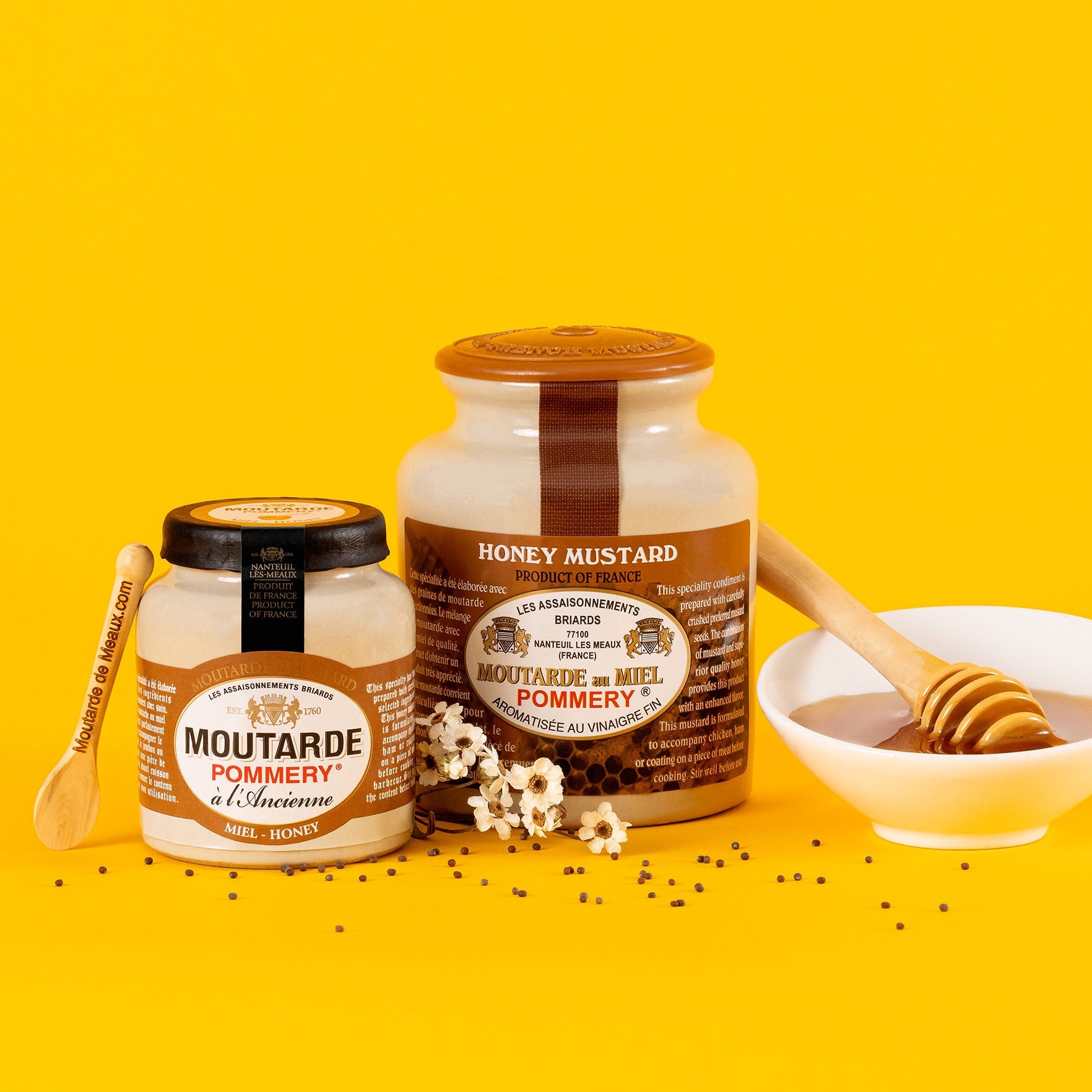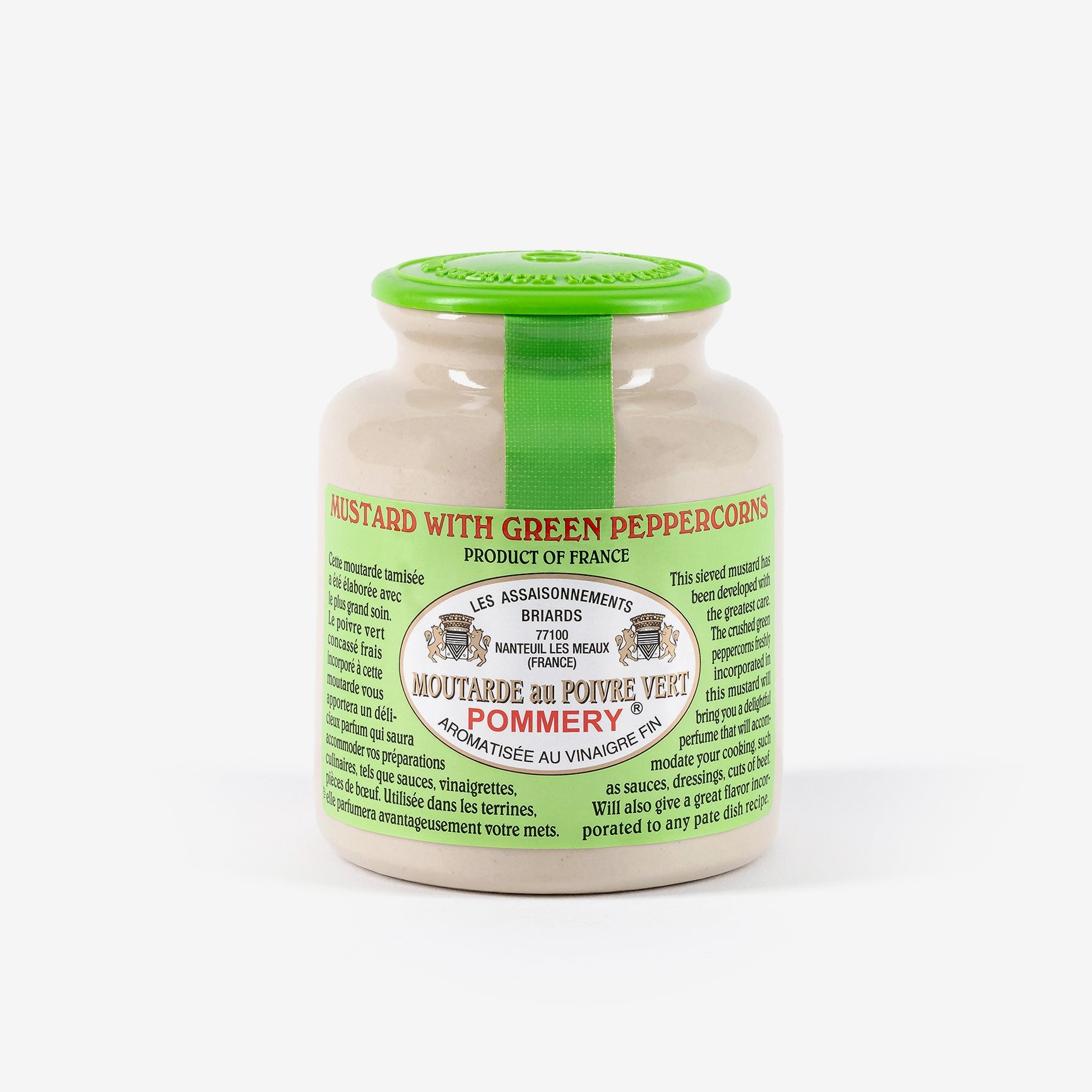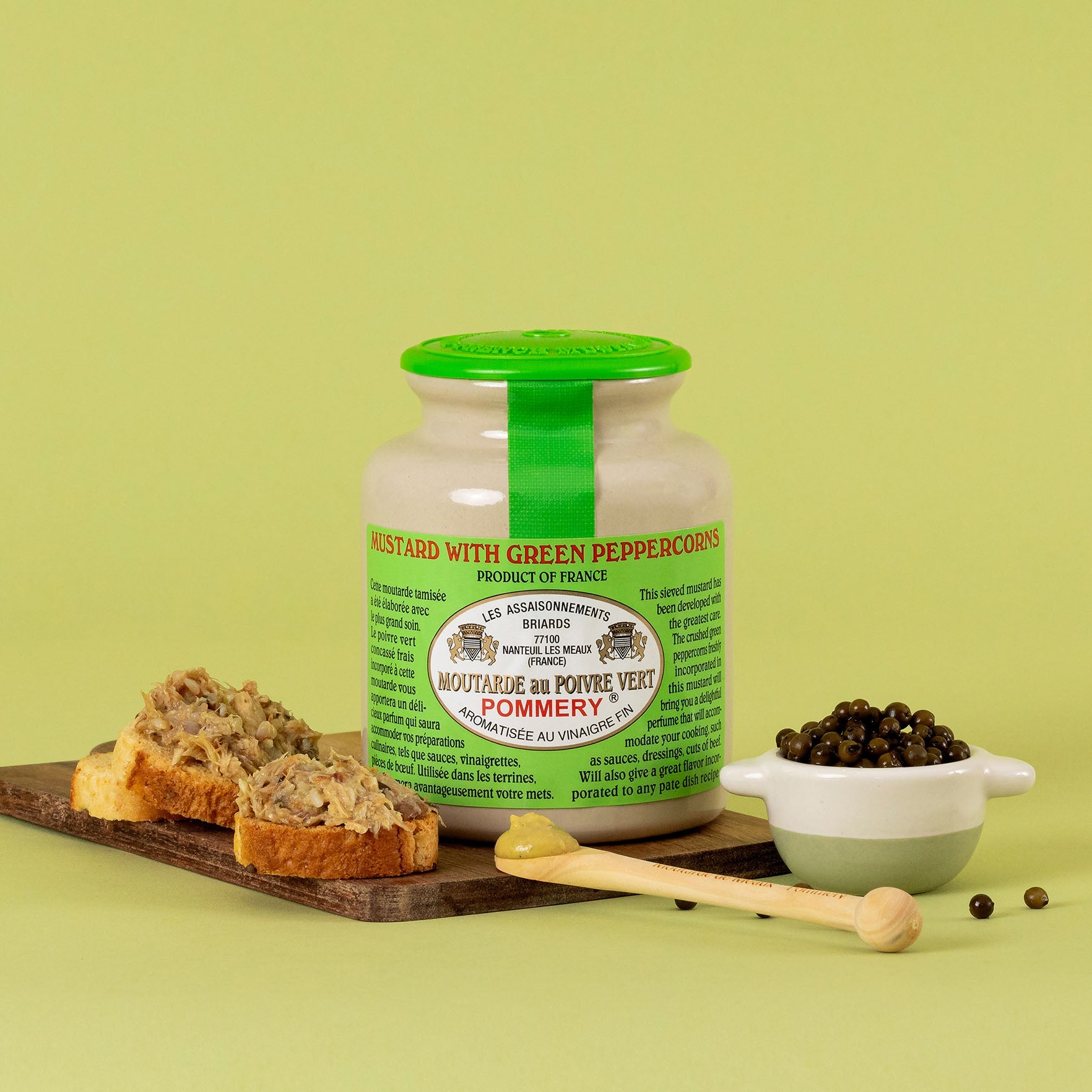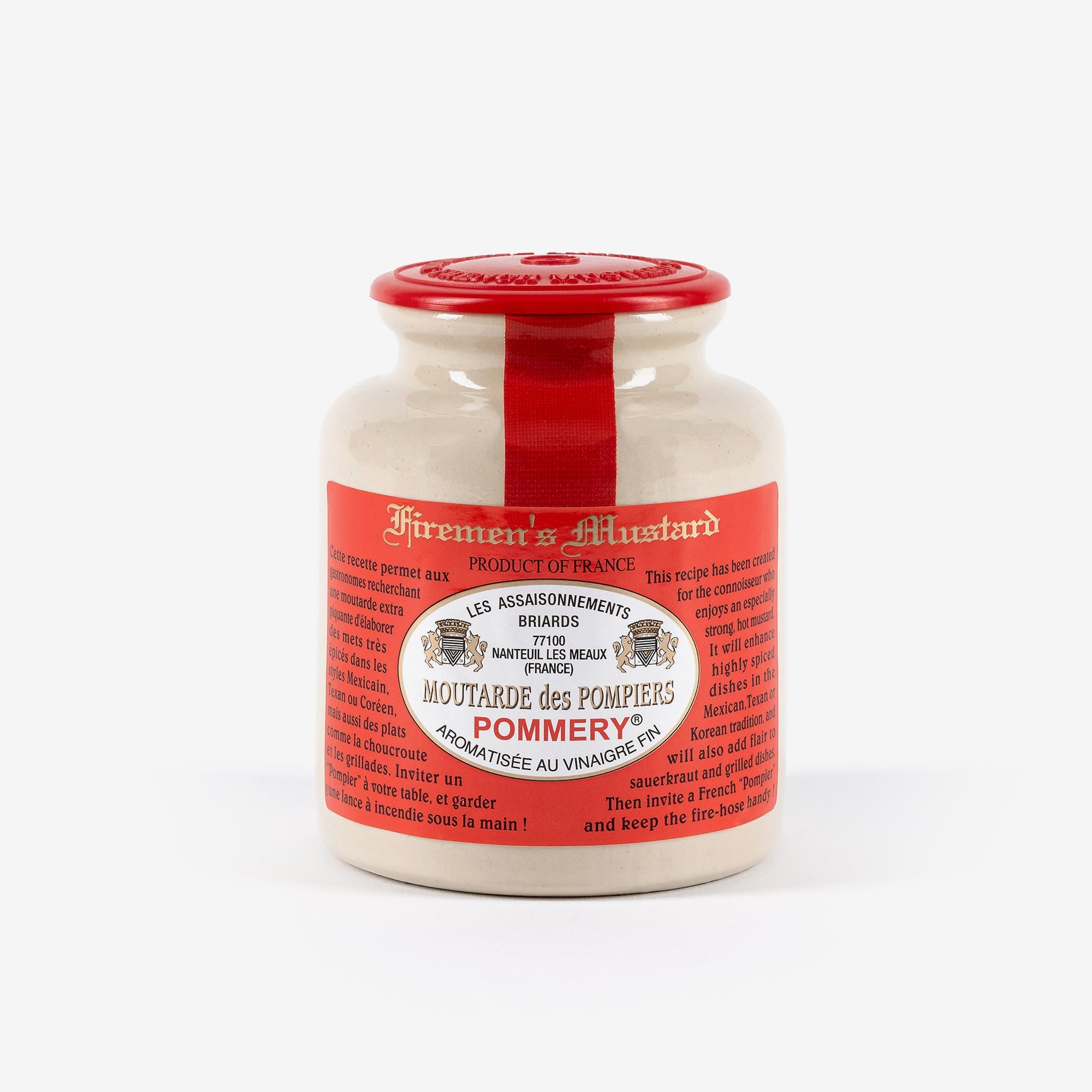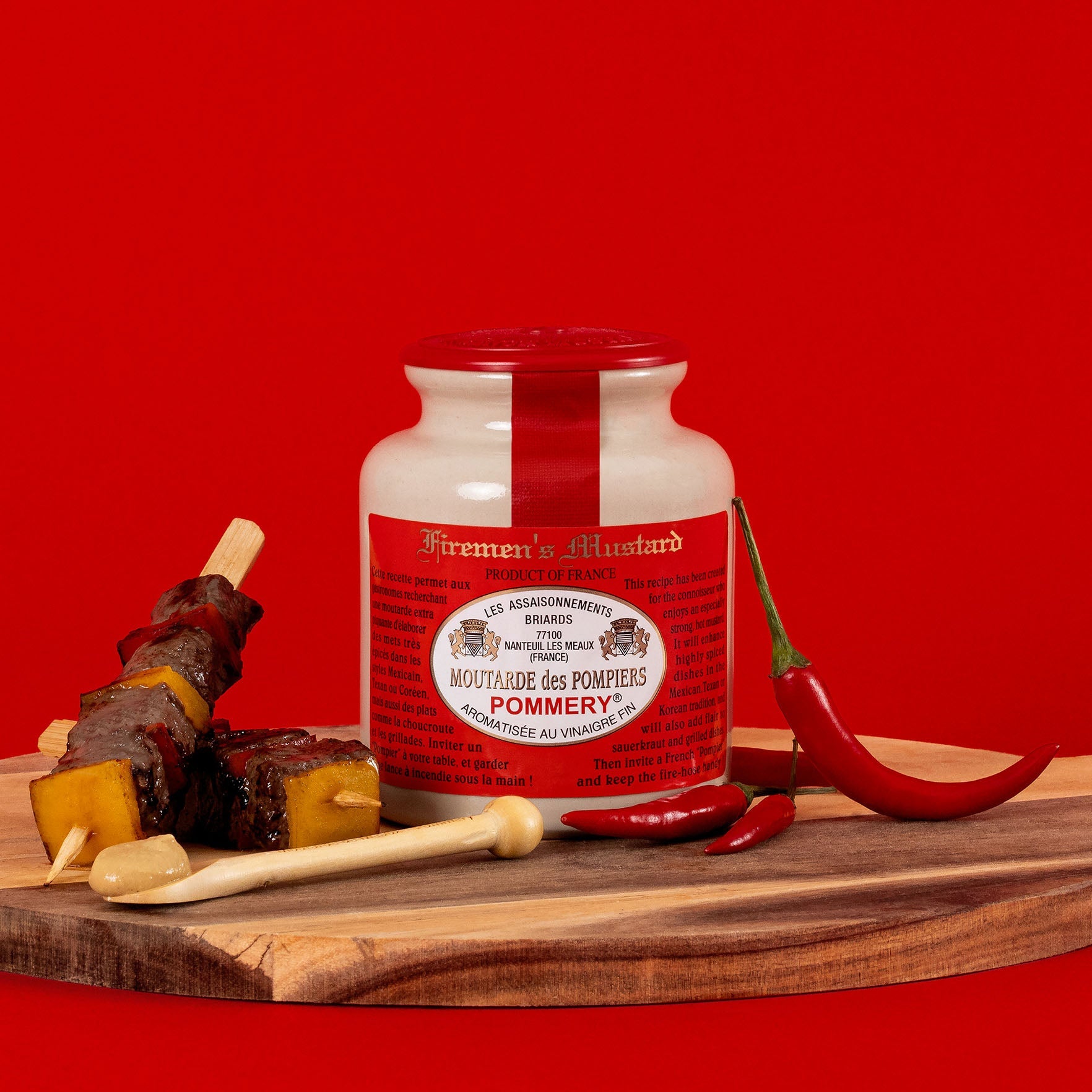The strength of mustard is much more than a matter of taste - it’s a determining criterion that directly influences your culinary experience. Sweet mustard VS strong mustard: from the sweetest to the most spicy, each mustard has its own personality and ideal use. Some prefer a delicate sensation that subtly accompanies the dishes, others seek that characteristic spiciness that awakens the taste buds. Through this article, we will guide you to choose the mustard perfectly adapted to your needs, whether it is family cooking, gastronomic recipes or simply to accompany your sandwiches!
What defines the strength of a mustard?
The seeds used
The strength of a mustard depends primarily on the seeds selected for its manufacture. There are three main types:
- White (or yellow) mustard seed: The sweetest of the three, Sinapis alba gives a mustard with moderate spiciness. Larger than its cousins, it is easily recognizable by its pale yellow color. It is mainly used for sweet mustards and light Dijon mustards.
- The brown mustard seed: Brassica juncea offers a more pronounced spiciness, with more complex notes. Smaller and darker than the white, it is widely used in medium-sized mustards and some traditional Dijon mustards.
- Black mustard seed: The stronger of the three, Brassica nigra develops an intense spiciness that rises to the nose. This little black seed is the star of extra strong mustards and the most traditional Dijon mustards.
The manufacturing process
The manufacturing process plays a crucial role in the final strength of mustard:
- Grinding: The finer the seeds are crushed, the more they release their pungent compounds. A very fine grinding will give a stronger mustard, while a coarser grinding will preserve whole seeds for a milder mustard. The grinding temperature is also crucial: a cold grinding better preserves the piquant compounds.
- Maceration: The seeds can be soaked in vinegar, white wine or a mixture of both before grinding. The duration of maceration directly influences the strength: the longer it is, the more the seeds develop their aroma and piquancy.
- Mixing: The way the ingredients are mixed, the brewing time and the temperature during this step have a direct impact on the final strength. A cold preparation preserves the spice better than a hot preparation.
The rate of black mustard seeds vs yellow
The strength of a mustard depends directly on the proportion between the different seeds used:
- Sweet mustards: They are composed mainly (70 to 90%) of white/yellow mustard seeds. Sometimes a small amount of brown seeds (10 to 30%) is added for a slight controlled spiciness. Black seeds are rarely used in these recipes.
- Medium mustards: They offer a balance between white and brown seeds (about 50/50), thus creating a moderate spiciness that suits the greatest number. Some recipes include a very low proportion of black seeds (5-10%).
- Strong mustards: They contain a majority of brown seeds (60 to 80%) and often a significant proportion of black seeds (10 to 20%). The white seeds are only a small part of the recipe, mainly used to bind the preparation.
Sweet mustard
Characteristics (taste, texture)
The sweet mustard is distinguished by special sensory qualities that make it an ally of everyday life:
- The taste: It develops a subtly raised flavor, where mustard notes are present but never aggressive. It often has slightly sweet aromas and a nice hint of acidity brought by the vinegar. The pungent sensation is very moderate and does not "rise" to the nose, unlike strong mustards.
- The texture: Its consistency is generally creamier and creamier than strong mustards. It is often thicker and less granular because the seeds are crushed more finely. This smooth and melting texture makes it particularly easy to spread and incorporate into preparations.
- The appearance: Its color is a rather light and bright yellow, due to the majority use of white mustard seeds. Its appearance is homogeneous and shiny, sometimes slightly pearly.
Ideal uses
- For children: Sweet mustard is the perfect initiation for young palates. Its very moderate piquant allows a gentle discovery of mustard, without surprising them. Ideal on a slice of ham or in a sandwich, it brings taste without being aggressive. Parents particularly appreciate its ease of dosage that avoids unpleasant surprises.
- In the kitchen: A true ally in the kitchen, it fits harmoniously into many preparations. It perfectly binds vinaigrettes without making them too biting and brings body to sauces without dominating them. In the fillings and terrines, it subtly plays its role of taste enhancer while participating in the final texture. It is also perfect to enrich a homemade mayonnaise without making it too strong.
- For light sauces: Its sweetness makes it the ideal ingredient for delicate sauces. It brings finesse to fish sauces, enhances a sweet and sour sauce and fits perfectly in creamy sauces. Its creamy texture guarantees a perfect bond and an even distribution of flavors.
- With white meats: It is ideal for meat with a subtle flavor such as chicken, turkey or veal. Its moderate spiciness sublimates these meats without masking their delicate taste. In marinade, it softens the meat delicately while flavoring it, and in sauce, it brings just what is needed to spice up the dish.
Strong mustard
Distinctive features
Strong mustard has very special characteristics:
- The piquant: Its main characteristic is its intensity that "goes up to the nose". This sensation comes from the allyl isothiocyanate, the compound that gives mustard its characteristic piquant. In strong versions, this sensation is immediate and persistent, creating the famous "whiplash" sought by amateurs.
- Taste: Beyond the piquant, strong mustard develops complex and pronounced flavors. There are peppery notes, some noble bitterness and aromas close to spices. The vinegar or wine used in its manufacture provides an acidity that further strengthens its character.
- Texture: Generally firmer and more compact than sweet mustard. It can be smooth and dense for the classic versions, granular with visible seeds for the old-fashioned versions, slightly drier than sweet mustards, which concentrates the flavors.
- The colour: It has a darker shade, ranging from deep yellow to light brown, due to the presence of large brown and black seeds in its composition.
Best uses
- As a direct accompaniment: Strong mustard is traditionally used pure to accompany cold cuts, especially sausages and raw ham. Its powerful piquant immediately awakens the taste buds and creates a striking contrast with oily meats.
- For red meats: It is the ideal accompaniment to beef, especially for grilled cuts such as entrecote or faux-filet. Its strong character perfectly matches the pronounced flavors of red meat, creating a perfect taste match.
- In marinades: Incorporated into the marinades, it not only gives taste but also helps to soften the meat thanks to its natural enzymes. Ideal for preparing robust marinades for game or red meat.
- For thrill-seekers: THE mustard purists who are looking for this characteristic spice that "goes to the nose". It offers an intense taste experience that will delight thrill seekers.
Our selection of strong mustards:
- Pommery® Firefighters' Mustard: sifted, flavored with chili.
- Pommery® Royale® Mustard with Cognac: in grains, flavoured with cognac.
- Pommery® Green Pepper Mustard: fine, sifted, enriched with finely ground green pepper from Madagascar.
For the kitchen
Mustard is a key ingredient in the kitchen, and its choice has a direct impact on the success of your dishes:
- For hot sauces: A strong mustard is recommended because cooking naturally reduces the piquancy. It will keep your sauces strong even after reduction. Ideal for wine sauces, meat juices or stews.
- For cold vinaigrettes and sauces: Medium mustard is the perfect choice because it acts both as an emulsifier and as a flavour enhancer. Its balanced spice will not dominate the other ingredients while providing the necessary touch of character.
- For marinades: A strong mustard is essential for red meats because its enzymes effectively soften the flesh while bringing taste. For white meats, a medium mustard will suffice.
- For delicate dishes: Opt for a sweet mustard with fine fish, poultry and fresh herb dishes. It will bind your sauces without masking the subtle flavors of your ingredients.
For the table
The choice of your table mustard must match your dishes:
- Red meats and cold cuts: The traditional strong mustard is essential. Its powerful piquant perfectly balances the rich and fatty flavors of these meats. It "cuts" the fat and awakens the taste buds.
- Poultry and white meats: A medium or mild mustard will better respect their delicate flavors. It will bring relief to the dish without crushing it, allowing you to appreciate all the nuances of taste.
- Sandwiches and snacks: Medium mustard is the most versatile. It raises the toppings enough while remaining pleasant for a relaxed consumption. Its creamy texture is also more convenient to spread.
- Cheeses: The old-fashioned mustard, with its grains, creates an interesting contrast of textures. Its complex notes go particularly well with hard or marbled cheeses.
Mustard is more than just a condiment, it’s a real ingredient whose choice has an important influence on your cooking. From the sweetest to the strongest, each type of mustard has its own personality and ideal uses. The main thing is to define your needs: are you looking for an intense piquant to enhance your red meat, a balanced sweetness for your sauces, or a light version suitable for children? Do not hesitate to have several mustards in your kitchen: a strong version for lovers of sensations, an average one for the versatility of everyday life, and a sweet one for delicate preparations. So you always have the right mustard for every situation!
Each mustard has its specific characteristics, strengths and uses. To know more, discover our article on old VS sifted mustards!



